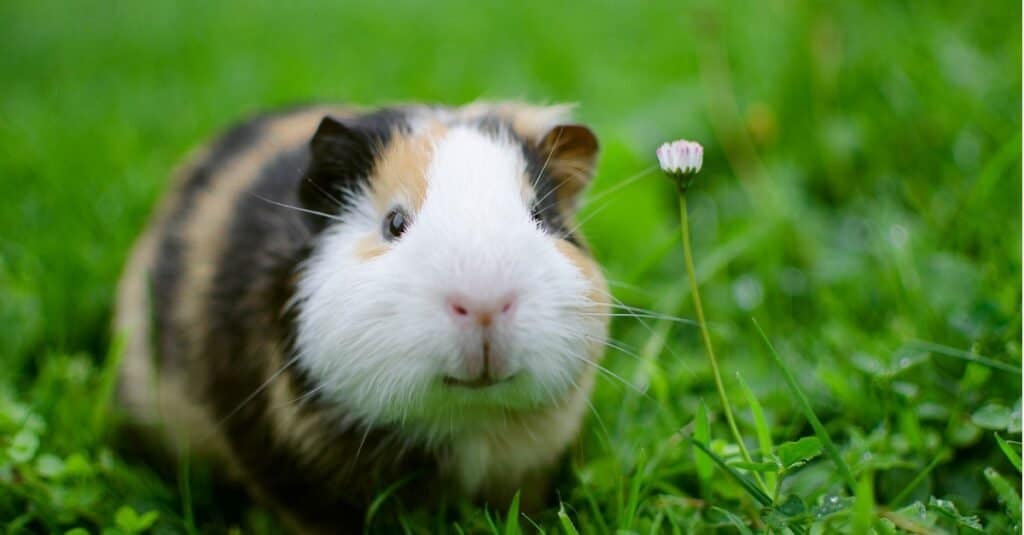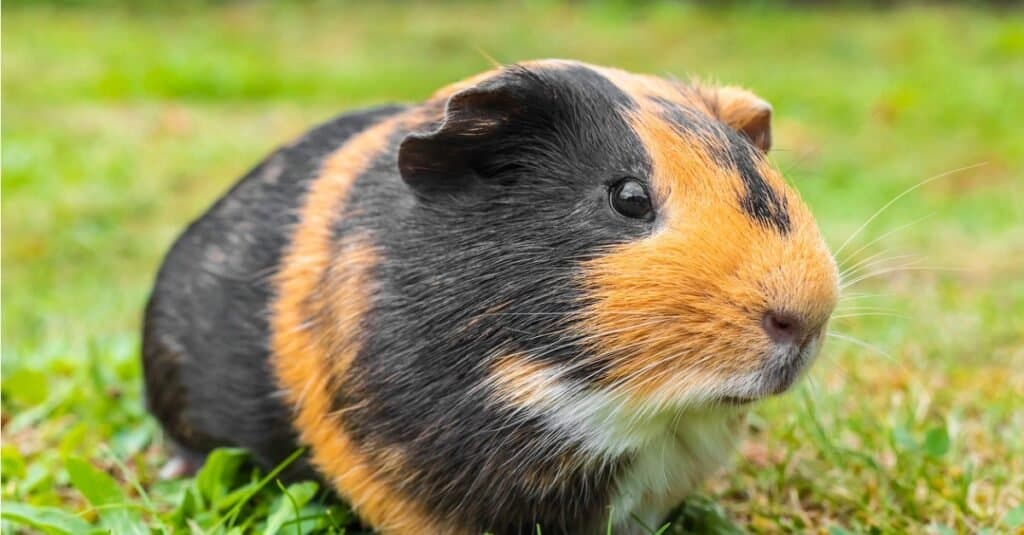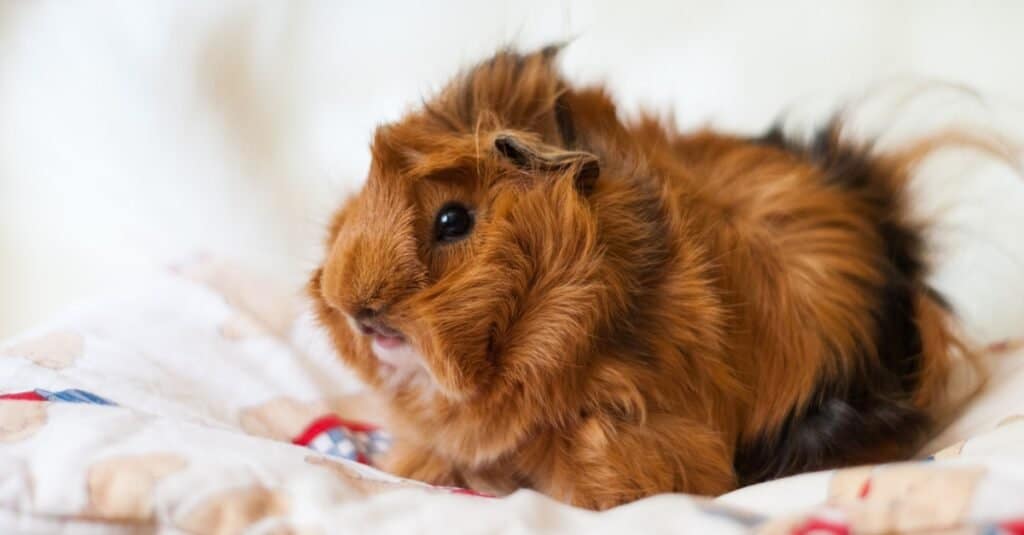“Cute” is what everyone describes Guinea pigs as, and their fluffy exterior makes them near therapeutic to hold. Guinea pigs are part of the Caviidae family and are classified traditionally as New World hystricomorph rodents, according to a study in the Journal Nature. They are very similar to capybaras, porcupines, and chinchillas.
Guinea pigs are also called cavy or cuy, depending on where you are. Humans more widely accept Guinea pigs as pets than any other member of the rat family, and the reason is not far-fetched. This is because Guinea pigs are lovable, docile, and are very amenable to humans.
Guinea pigs, like other members of the rodent family, are pretty small when compared to some other mammals preferred as pets. They are herbivores, and we will find out if their ultimate size is affected by what they eat. We will also learn of other factors that enable their growth, and how this growth affects Guinea pigs. This article will provide you helpful information on how big Guinea pigs get.
How Big Do Guinea Pigs Get?

Guinea pigs grow as big as 10-12 inches and weigh between 24-42 ounces.
©iStock.com/Galyna0404
At adulthood, Guinea pigs grow as big as 10-12 inches in length and between 24.0-41.6 ounces heavy. On average, they can be 5 inches tall, though their height is not an essential metric for how big they are.
These measurements are typical of an average Guinea pig. They reach maturity at 14 months old, and they can achieve this size by eating the right food and proper care.
Guinea pigs grow quickly. For the first 7-8 weeks, they can become 6-8 inches long, after which there is a pause, and their growth becomes slow.
During this period, most pet owners assume that their pigs have achieved max growth, but this is not the case because, after the short pause, they continue growing until they are between 8-10 inches long. This period of growth may last for 8 weeks.
And since they are considered fully grown by the completion of 14months, if your Guinea pig would get as long as 12 inches, it would be evident by now. But just like other human pets, getting big for Guinea pigs depends mainly on the breed. There are 13 confirmed breeds of guinea pigs, according to an article in the Journal of Entomology and Zoology Studies.
What is the Guinea Pig’s Biggest Breed?

The biggest breed of the guinea pigs are called Rex Cavies.
©iStock.com/MartinLisner
Rex cavies, also called the Rex, can grow to a whopping size of 17 inches in length, which is astonishing. This is particular to this breed, with a fitting name “rex” being Latin for “king.” Rex cavies, despite their propensity to be the giants of the Guinea pigs world, sometimes fall short of these expectations. Some cavies at 6 inches long are already at their peak, even with proper care and feeding.
How Do Guinea Pigs Reach Their Full Size?

It takes Guinea pigs one year and two months to grow to adult size.
©Sofiia.P/Shutterstock.com
Guinea pigs reach their full size depending on several factors. This includes their type of breed, gender, age, and diet.
Breed
There is a possibility that all Guinea pigs share a common ancestry. The different combination of genes from both the hog and sow results in the formation of new genotypic materials spread out in the babies—each carrying different combinations of genes and manifesting a variety of physical characteristics, including size.
Age
The age of maturity for Guinea pigs is 1 year and 2 months. Between birth and adulthood, guinea pigs undergo a series of changes anatomically and physiologically. Even though as pups (like dog babies), they would fit in the palm of your hands with space to spare. They would have doubled in size by 7-8 weeks. Their growth graph only keeps ascending till they hit the 14th month. And some breeds still continue growing even after 14 months have elapsed.
Diet
What they eat and how often they are fed determines how big Guinea pigs can get. Guinea pigs are strictly herbivorous. Their digestive system cannot process animal matter and could seriously affect them. Though they can be fed onion, garlic, egg, meat, and insects, do not give them as it will harm them. Instead, feed them fruits, vegetables, good quality pellets, Timothy hay, Oaten barley, and grasses. Also, their food has to be high in vitamin C because guinea pigs cannot naturally synthesize vitamin C.
Gender
There are size differences between the male and female Guinea pigs. The male, known as boar, is bigger and heavier than the sow (female), which is smaller and lighter.
What Hinders Guinea Pigs from Getting Big?
Diseases
Bad health will stop Guinea pigs from growing big. Guinea pigs have illnesses, such as scurvy, malocclusion, diarrhea, and constipation. One of the symptoms of most diseases is lack of appetite, and this inability to eat food causes a drawback on guinea pigs size, especially if they are neglected and not immediately treated. Animals must be checked regularly by the vet to ensure optimal health.
Rough Handling
Guinea pigs are fragile creatures, unlike other pets adopted by humans, and do not react well to stress.
Starvation and Improper diet
To attain a considerable size or any size at all, Guinea pigs need to eat constantly. They are pretty energetic and could be active for close to 20 hours a day. They need food for that amount of energy, hence the constant eating. Also, they should not be fed with animal matter or rotten plant materials; it may cause diseases.
Bad living conditions
When raised as pets or in captivity, arrangements should be made for adequate space in their housing units. Guinea pigs do not do well in humid conditions, as their fragility is both internal and external. Consequently, Guinea pigs are highly susceptible to heat prostration.
Guinea Pigs as Pets
Guinea pigs are lovely pets. Not only are they cute, but they are also very portable and can be carried around without giving much away.
Care should be taken if you are a pet owner – except you want pups, do not put boars and sows together in one housing unit.
Clean your Guinea pig’s unit always. Though they can groom themselves, once in a while, brush them so you can remove any ectoparasite living in their fur. Also know your Guinea pig’s breed so you can always understand if they are getting underweight or overweight.
The photo featured at the top of this post is © iStock.com/DigitalAppeal
Thank you for reading! Have some feedback for us? Contact the AZ Animals editorial team.






